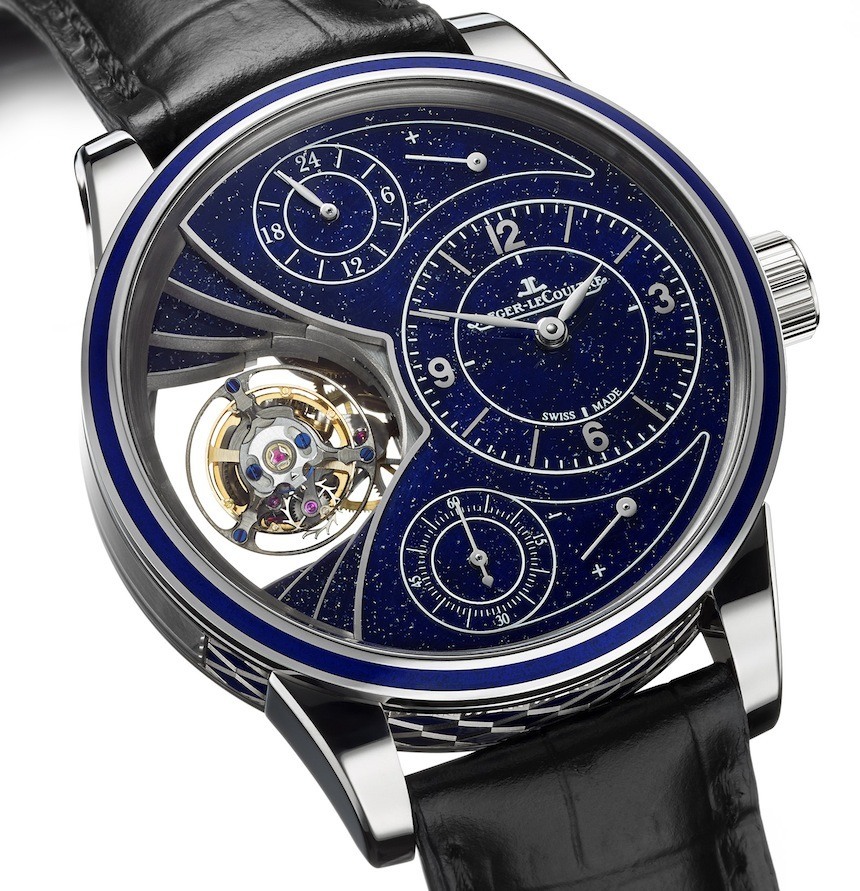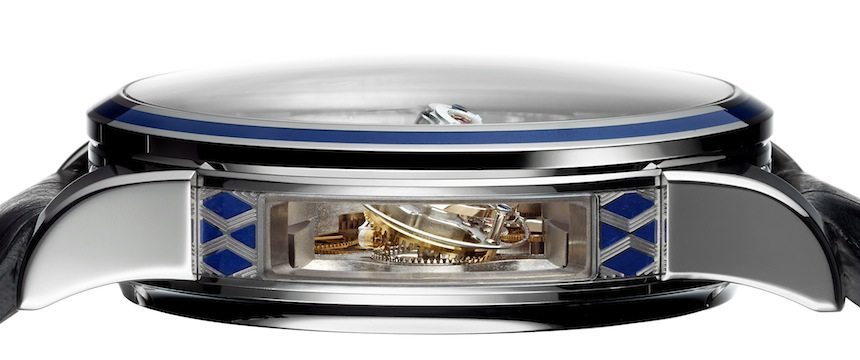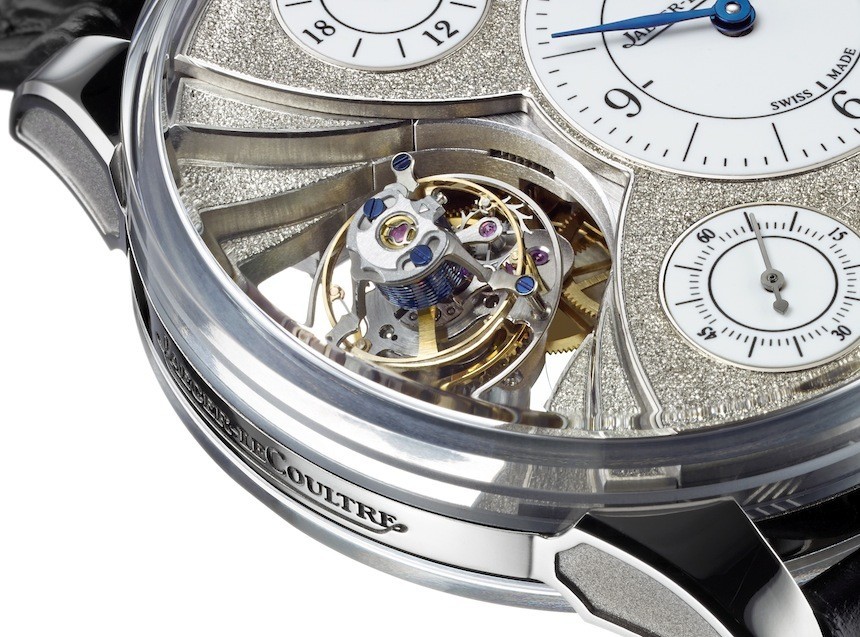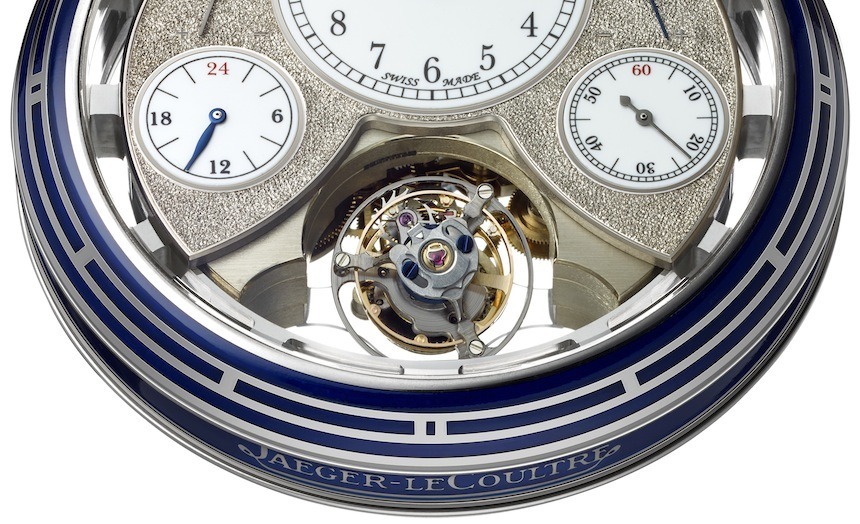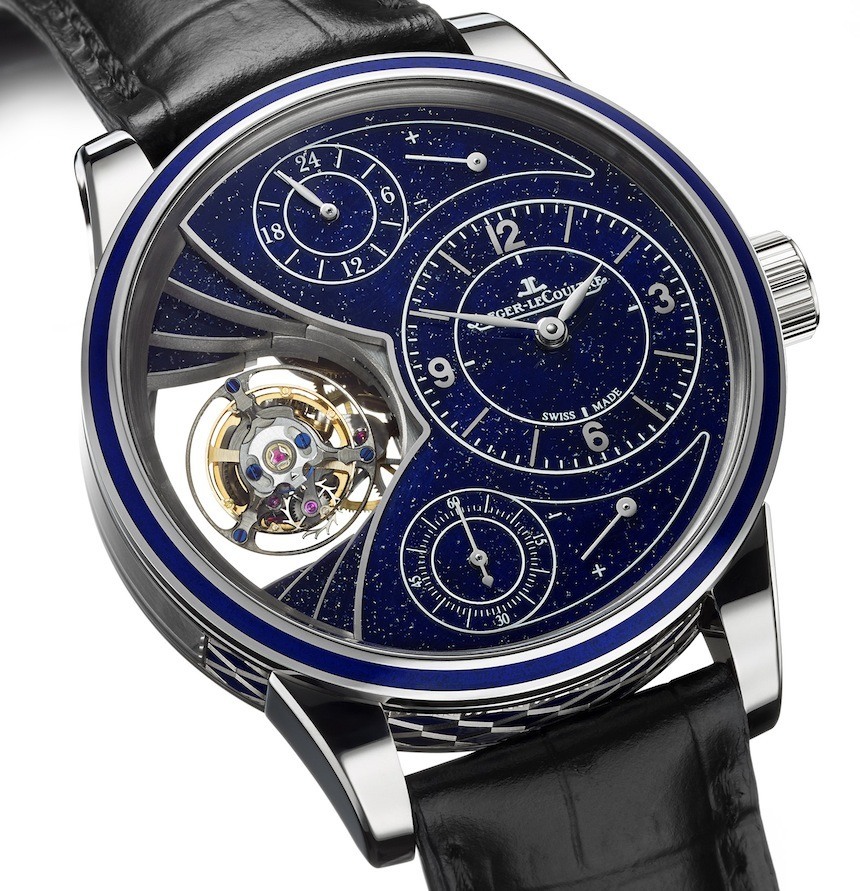
It would be extremely difficult even for the most educated scholars of the matter to find a time or age in the history of watchmaking that offered as many novel ideas as we have today. At present, the industry is in a phase where there is incredibly fierce and global competition between all brands, small and large alike, forcing all of them to push their own boundaries in a constant fight over an ever growing customer base. And much like the brands, us watch enthusiasts are often left with asking ourselves: just how could the latest and greatest be topped? A possible answer comes from Jaeger-LeCoultre, who just announced its Hybris Artistica collection of not one or two, but 12 spectacular pieces–each of which could rightfully claim to be a remarkable timepiece in itself. Today, we are looking at the three Spherotourbillon pieces of the Jaeger-LeCoultre Hybris Artistica collection, while articles dedicated to the other models will follow later on.
Before we discuss the watches themselves, let’s briefly discover what the Jaeger-LeCoultre Hybris Artistica collection is and what it means for the brand. Jaeger-LeCoultre is among the few true manufactures, those with extensive in-house production capabilities concerning just about every phase of watchmaking. The brand has around 1,300 different movements and 350 patents to its name, and so it is of no surprise that they have been an important supplier to a great number of major Swiss watchmakers. As per their claims, 180 skills are possessed and practiced under the roofs of their manufacture, and the Jaeger-LeCoultre Hybris Artistica is meant to be an exercise in showcasing the artistic nature of many of these skills in a special, synthetic way. This is achieved by mixing these more artistic crafts of the company with twelve of its most iconic timepieces, resulting in beautifully “reconsidered” versions of such trademark models as the Reverso, the Duometre Sonnerie and Duometre Spherotourbillon, the Gyrotourbillon 1 and 3, the Atmos clock, and a number of others.
[youtube http://www.youtube.com/watch?v=FplZt_V_lxA?rel=0&w=730&h=411]
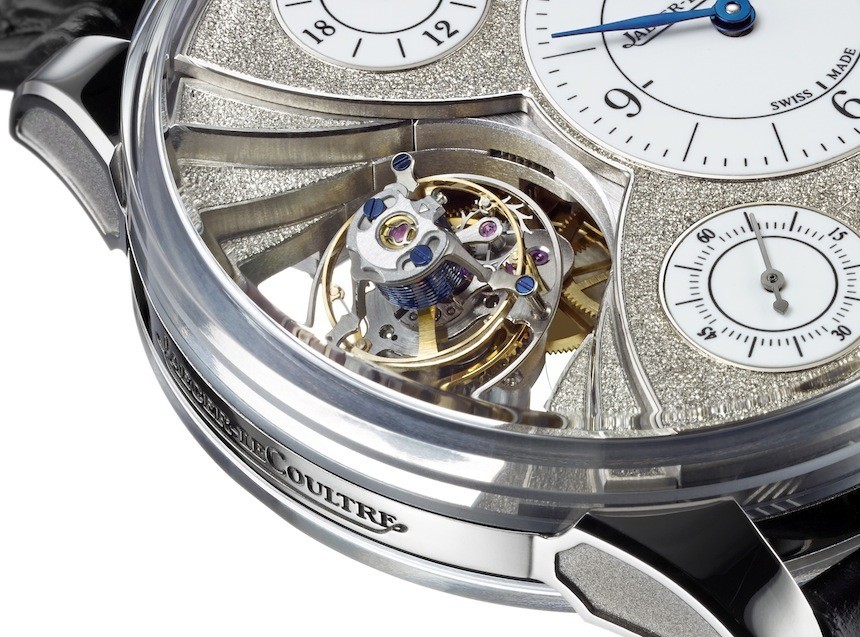
One of the primary reasons why a collection such as this is a rare phenomenon, even from major brands, is because there are only a handful of Swiss manufactures that practice such an extensive palette of crafts “in-house.” Instead, what most other brands do when it comes to creating specially crafted pieces is that they reach out to dedicated experts of the particular field on which they need to rely to realize their concept. For example, for a very limited collection of a few dozen pieces with uniquely painted enamel dials, most brands will have external suppliers—whom often are individual craftsmen—to deliver the hand-painted components. What Jaeger-LeCoultre wants to achieve here is sending a message that emphasizes the importance of their proprietary manufacturing abilities.
As such, the only genuinely new timepiece in this 12-model collection is the pocket watch, while all others are references which are already famous examples from the brand. As these well-known watches serve as reference points, one can easily see how much of a difference the brand’s artistic departments are able to achieve when they stretch their arms and legs a little bit–or when they are given some additional creative freedom. The Jaeger-LeCoultre Hybris Artistica comprises extremely rare materials, novel dial designs,beautifully enameled cases, skeletonized movements, uniquely diamond-set dials and even handcrafted marquetry. That allows us to say that almost all pieces in it could be– and are–astonishing watches by themselves, creating the halo-effect Jaeger-LeCoultre is playing for right now. But, there is more to it than that. Since these pieces are revealed and offered simultaneously, in a comprehensive collection, the real motivation becomes apparent: to separate the brand from all of its competitors. Let’s begin browsing through the Jaeger-LeCoultre Hybris Artistica and see just how well the manufacture performs in conveying that message.
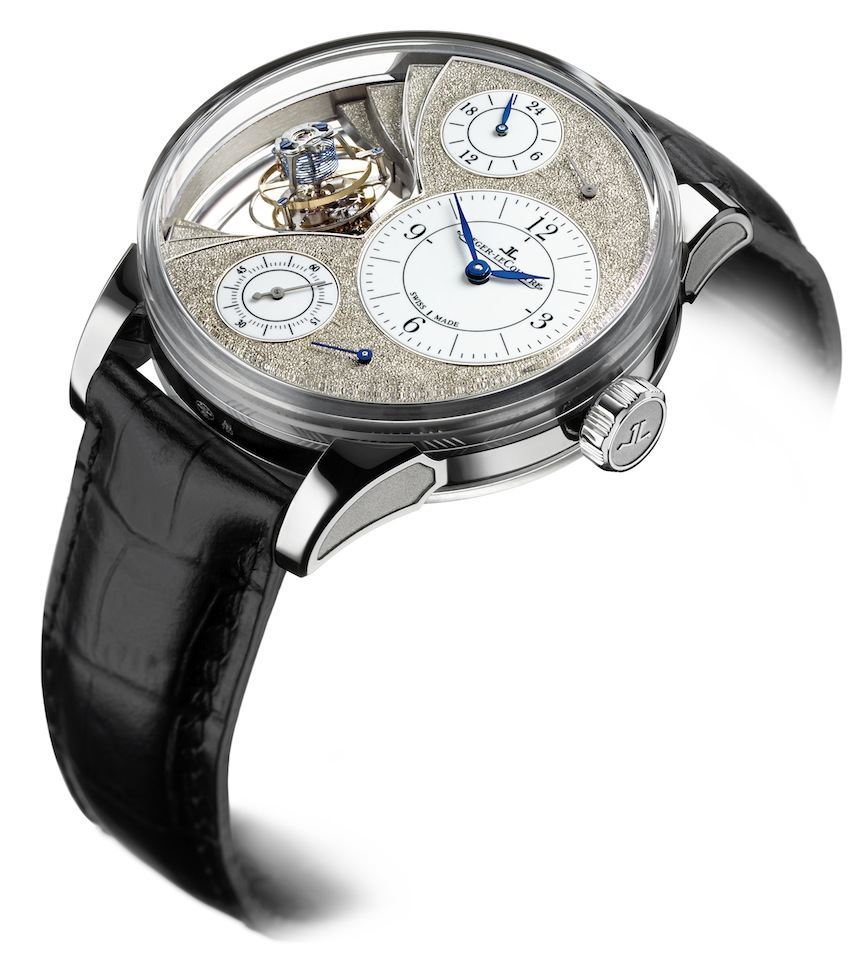
Of the three Spherotourbillons we will be looking at today, two are based on the Duometre Spherotourbillon wristwatch. In short, what Duometre stands for is the “dual-wing concept” of the movement, meaning that it uses two mainspring barrels that serve different purposes. One is meant to power the regulation system of the watch (the tourbillon in this case), and the other is meant to power the functionality of the watch. This concept helps reduce amplitude errors and is meant to make the watch more accurate over time. For more details check out our hands-on article here.
The version shown above is the piece with the 18k white gold dial, showing a special surface treatment done by hand and showing a grained, yet glossy look. A modification that is frequently seen in Jaeger-LeCoultre Hybris Artistica models is the omission of the bezel, meaning that the domed sapphire crystal is directly installed on the case. This, needless to say, creates a much improved look at the dial and of course the tourbillon. Having said that, what possibly is the nicest modification with this particular piece is the series of “steps” above and below the spherotourbillon. It is a design element that I feel should have been included in the original piece as well–and that is perhaps what best defines what a true improvement is. It highlights the tourbillon in a tasteful way that I find to be impressive both artistically and architecturally. To top it all off, the tourbillon stands on a sapphire bridge, making it appear as if it was suspended in the air.
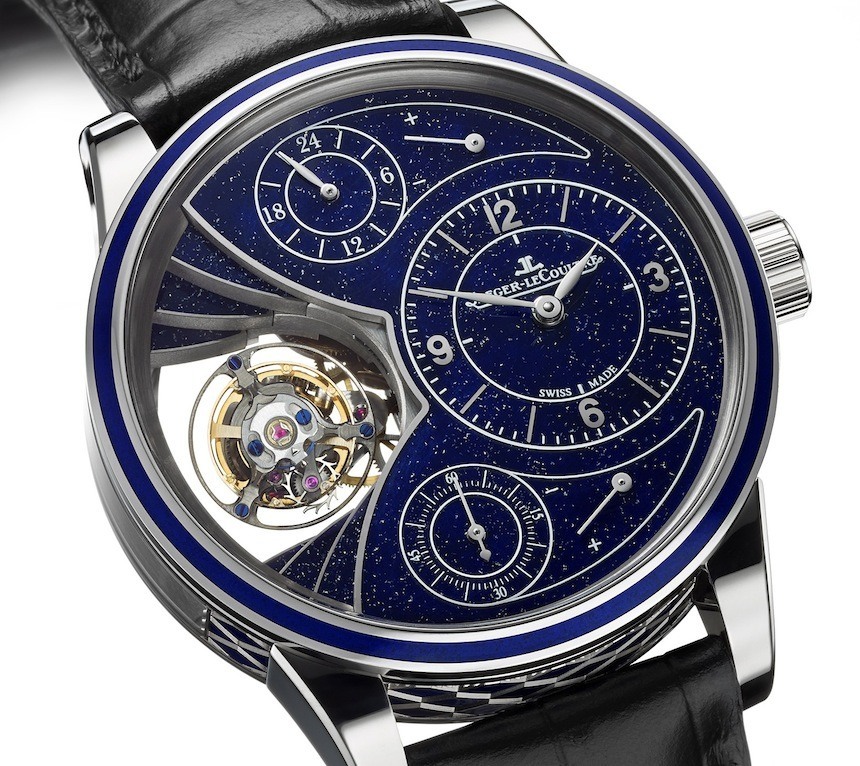
The spherotourbillon is made available in yet another configuration, with what I would call a “deep sky” colored dial. The material used here is called paillonné enamel and it has been used for the dial, the bezel and even for some parts of the case itself. Enameling is an art all to itself, with dozens of various procedures that ultimately result in greatly different aesthetics. To create great enamel, one has to combine all the different techniques together in the right order and performed with great perfection, otherwise the dial can be ruined even at the very last step in the process of making it.
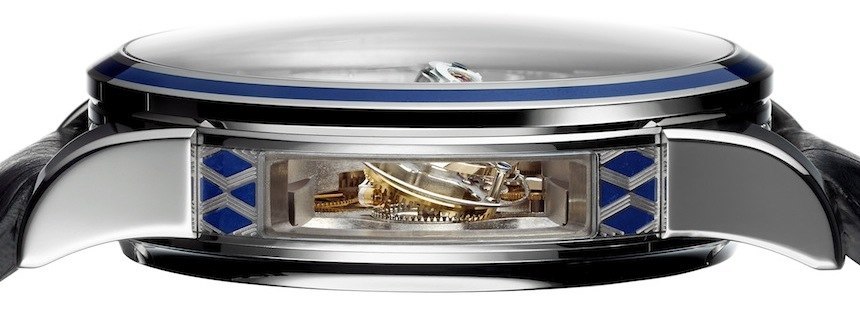
With paillonné the blue enamel is enriched with tiny motifs or chips of silver which the craftsman “shaved” from a block of silver. The particles are called paillons, and are added to the enamel when it is still liquid. Once the enameled components are past their 800 degree Celsius cooking, the tiny silver particles are to be revealed and brought to the surface. To do this, the dial has to be polished in a way that removes just enough material to better highlight the tiny silver particles, while not damaging the thin layer of enamel. How it is achieved on the surfaces of the curved and stacked “steps” leading to the tourbillon is something I would love to see in person!
Finally, the case on its sides and in between the lugs, as well as the bezel are all engraved and pierced to create a pattern which is then filled up with matching blue enamel. The result is a Duometre á Spherotourbillon which is all covered in beautiful blue enamel, and as such, which should always be handled with excessive care for the fragility of the material.
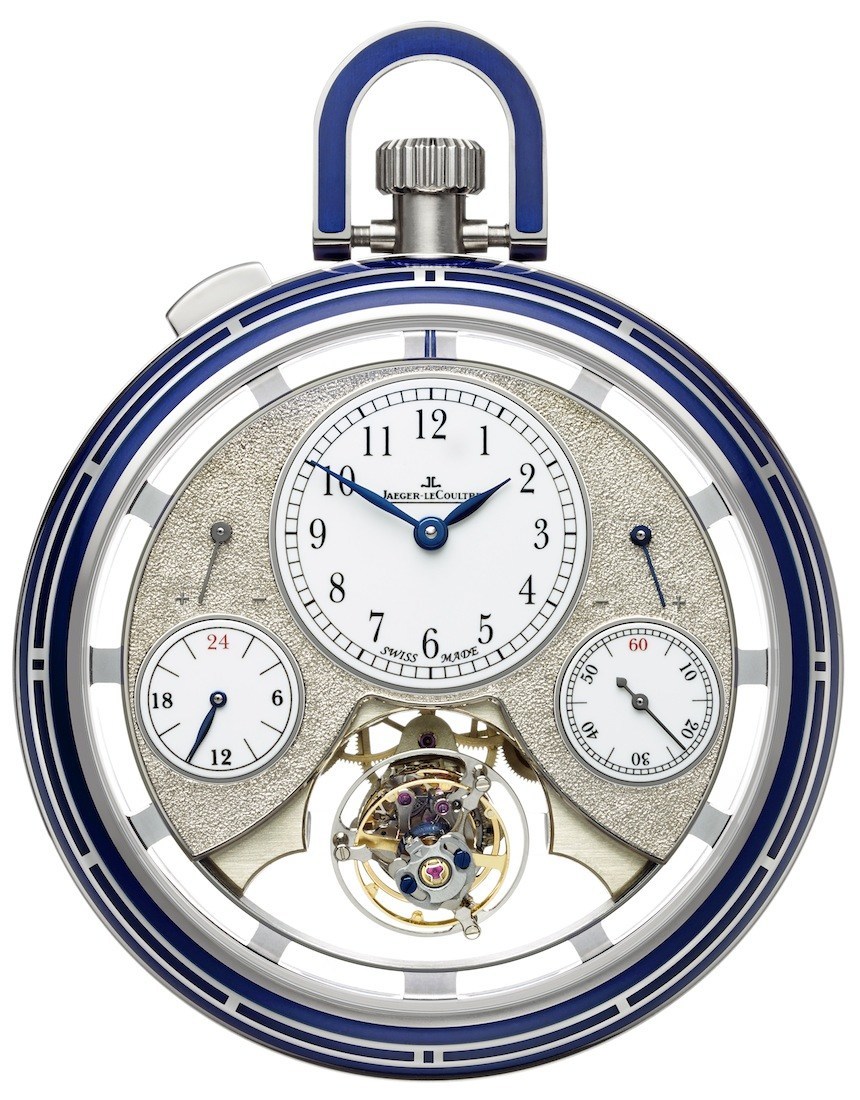
The Spherotourbillon proved to be the go-to complication in the Jaeger-LeCoultre Hybris Artistica collection, as this is the third – and last – piece equipped with it. This time around it is a piece not be worn on the wrist but rather in one’s pocket, and the “issue” this creates is perhaps not even obvious at first. The entire Jaeger-LeCoultre Hybris Artistica collection is about blending less obvious, or rather, less often exposed in-house abilities with some of the trademark models of the brand. The contradiction this offers is that of having a very classical design–as the base model of this piece dates back to 1928–and an exposed tourbillon, something that would not have been considered very classy a century ago. But we are living in a different time and age and it must be said that Jaeger-LeCoultre revealed the centerpiece of the watch in a very tasteful way by blending it into the design instead of highlighting it ostentatiously.
The combination of white gold as seen on the hand-chiselled dial and the white enamel of the subdials make for a combination that not only matched seamlessly around a century ago, but looks incredibly good even today. It seems that enameling cases is a craft that Jaeger-LeCoultre is keen on highlighting, although it is true that it is an extremely seldom seen feature in modern horology. One of the most problematic aspects of case-enameling is not only the fact that it is rather fragile once it is finished, but that it is also extremely difficult to get right in the first place.
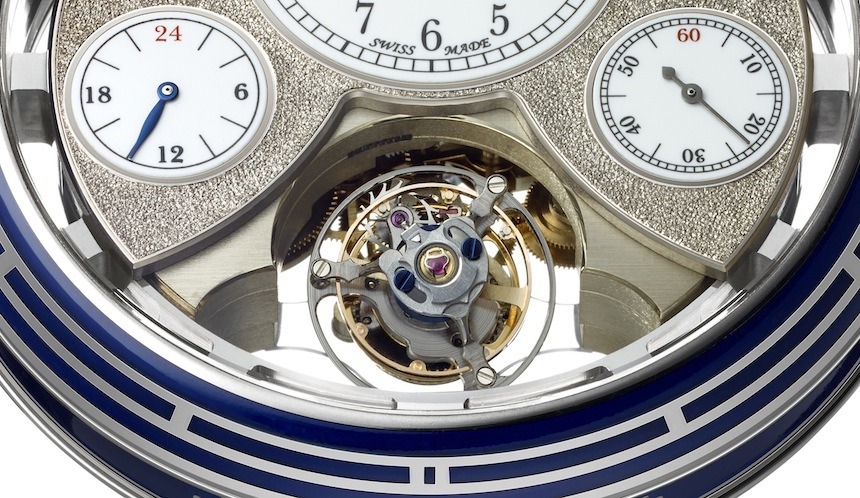
For this pocket watch, the bezel is set with a ring that shows twelve indexes, with enamel being applied around it. First of all, enamel contracts as it is cooked at the aforementioned 800 degree Celsius, necessitating the re-application of it to the places it ceased to cover. Second, when it used as a filler between other components, some of it has to be removed to assure that the enamel is perfectly flush to the other parts around it–especially on a case, where one can not only see, but also touch any slight alternation in the surface. I must say that I am particularly looking forward to handling this piece once to see for myself what it looks like in the metal, or enamel, rather. The only thing I miss from this pocket watch version of the Spherotourbillon is the use of the steps I have grown so fond of with the other pieces in this Jaeger-LeCoultre Hybris Artistica collection. I feel it would have made for a splendid bond between the three sphero-pieces and I just wish those were somehow incorporated into this truly exceptional piece as well.
Overall, what the Spherotourbillon watches of the Jaeger-LeCoultre Hybris Artistica collection offer is a detailed look into what Jaeger-LeCoultre is capable of achieving when it comes to traditional dial–and case–decoration. Anything from hand-chiselled and hand-polished surfaces to beautifully engraved and enameled dials and case components, all in favor of tastefully redressing some of the maison’s technically most impressive pieces. Jaeger-LeCoultre chooses not to openly communicate the prices for any of the models from this collection, what we do know however, is that they will start delivering the first pieces sometime during 2015. jaeger-lecoultre.com

